Xôi chè (Sticky Rice with Sweet Soup)
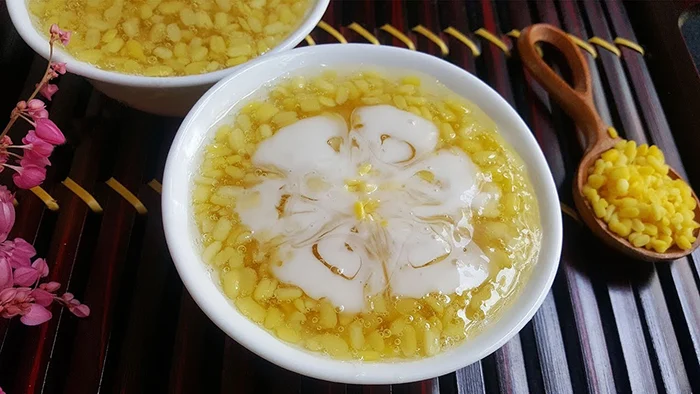
Ingredients
Sticky Rice Layer
-
300g glutinous rice (soaked and steamed with a pinch of salt)
Sweet Soup Layer
-
180g hulled mung beans (steamed and blended)
-
200g tapioca starch (mixed with water to create thickened sweet soup texture)
Other Ingredients
-
Sugar (to taste, for chè part)
-
A pinch of salt (to balance flavor)
-
A small amount of cooking oil (optional – to coat mung bean paste or prevent sticking)
Nutritional Information
For: Vegetarians and Vegans
Calories per serving: ~ 220–260 kcal (per portion with both sticky rice and sweet soup)
Key Nutrients
1. Healthy Carbs (35–40g)
- Source: Glutinous rice + mung beans + tapioca starch
- Benefits: Provides sustained energy, supports digestive health through resistant starch and complex carbs.
2. Plant-Based Protein (5–6g)
- Source: Hulled mung beans
- Benefits: Aids in muscle repair, supports immune health, and helps maintain steady energy levels.
3. Natural Fats (1–2g)
- Source: Cooking oil (used to enhance texture and flavor)
- Benefits: Assists in nutrient absorption and adds richness without overpowering the dish.
4. Fiber (2–3g)
- Source: Glutinous rice + mung beans
- Benefits: Promotes digestive regularity, balances blood sugar, and supports satiety.
5. Essential Minerals
- Iron (mung beans): Helps transport oxygen in the blood.
- Magnesium (mung beans, rice): Supports muscle and nerve function.
- Potassium (mung beans): Helps regulate fluid balance and blood pressure.
1. Rinse and Soak the Glutinous Rice & Mung Beans
- Rinse the glutinous rice thoroughly and soak it for at least 4 hours (or overnight depending on the type of rice). Soaking helps the rice cook evenly and become more fragrant and sticky.
- Rinse the split mung beans carefully, discarding any dark or damaged ones. Then soak them in water for at least 3 hours.
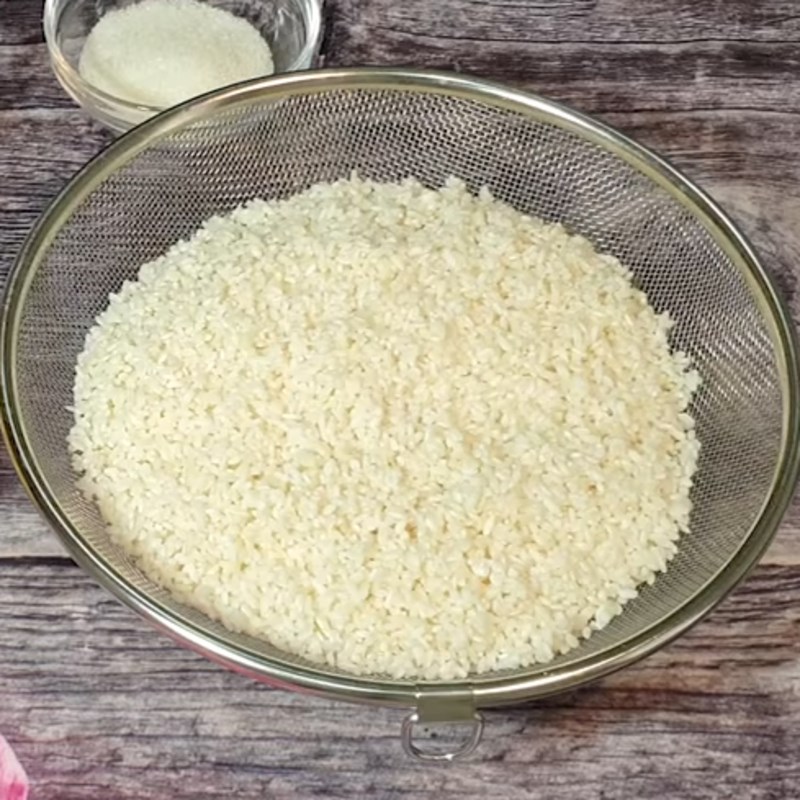
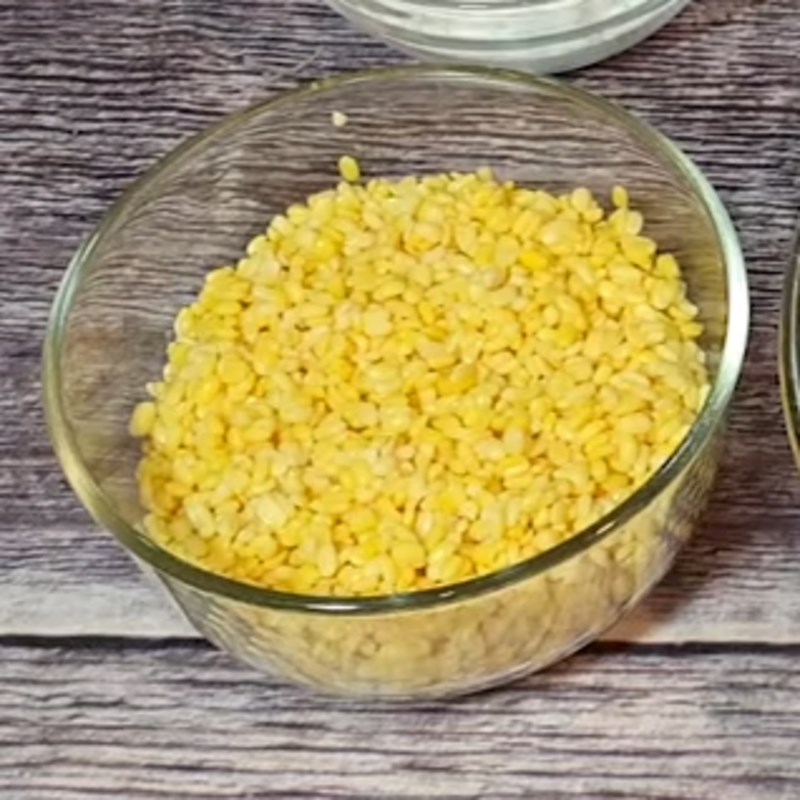
2. Steam and Mash the Mung Beans
- Pour water into a steamer pot, filling it about 1/4 full.
- Add 1 teaspoon of salt to the mung beans and gently mix to enhance their flavor. Spread the beans evenly in the steamer tray and poke a few small holes through the layer to allow steam to circulate and cook the beans evenly.
- Cover with a lid and steam on high heat until the water boils. Then reduce to medium heat and continue steaming for about 20 minutes until the beans are fully cooked.
- Once cooked, transfer the mung beans to a plate to cool. Set aside 1/3 of the beans for making the sweet soup. Mash the remaining mung beans in a mortar and pestle until smooth.
💡 Tips:
Use hot water (around 80°C) in the steamer for best results. If using cold water, bring it to a boil first before placing the tray on top.
Steamed mung beans should be fluffy and not clumped together.
If you don’t have a mortar, you can use a blender—but blend in short bursts, stopping to stir and avoid clumping.
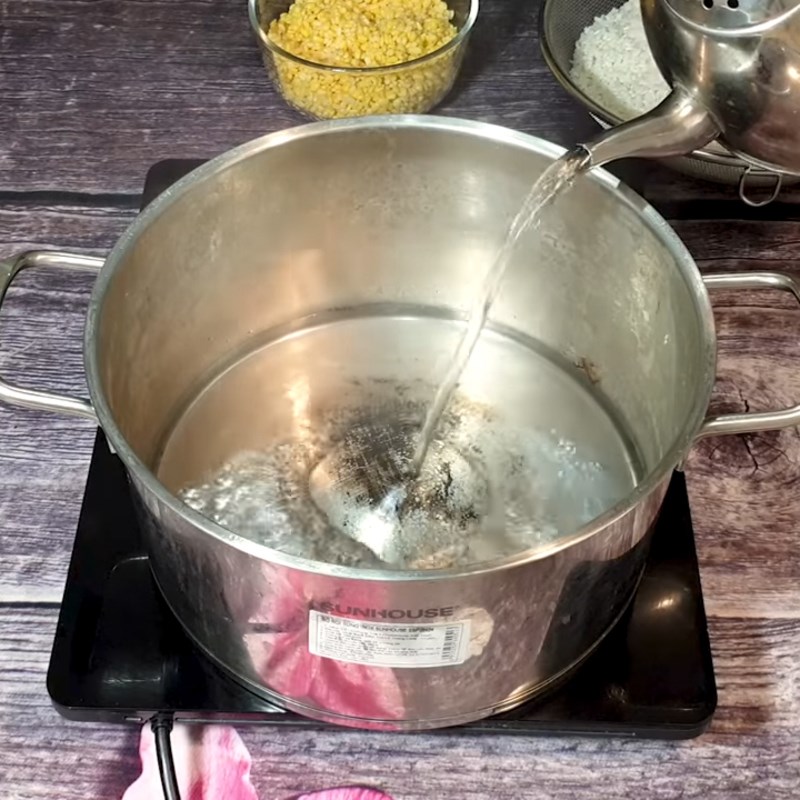
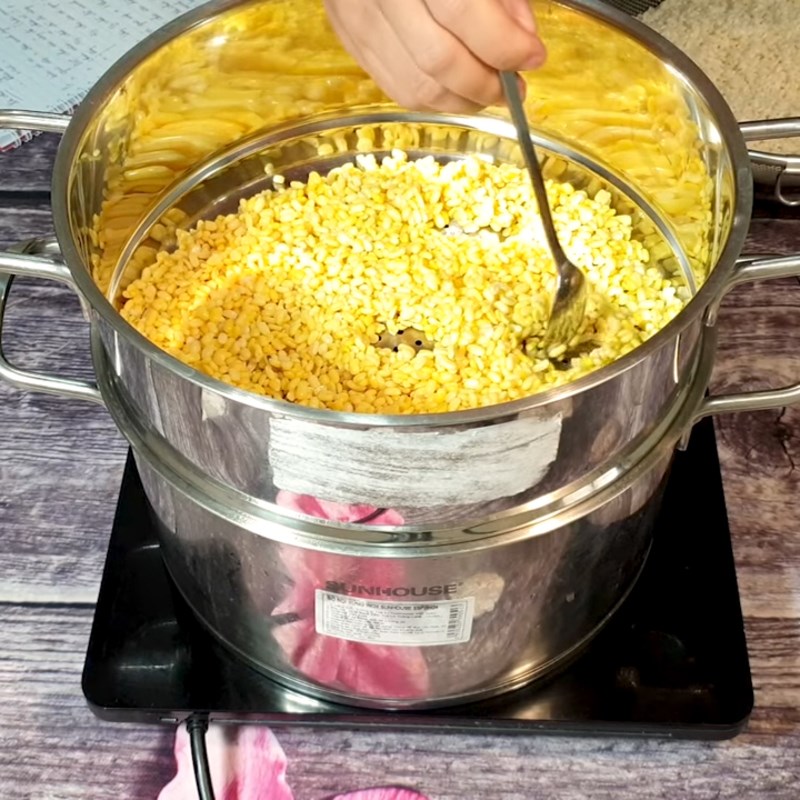
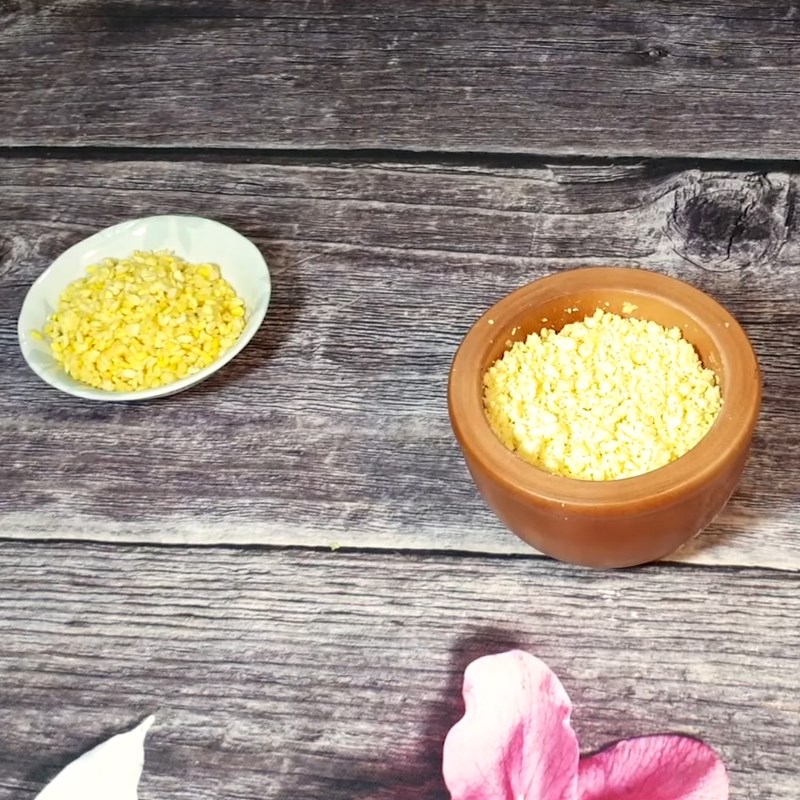
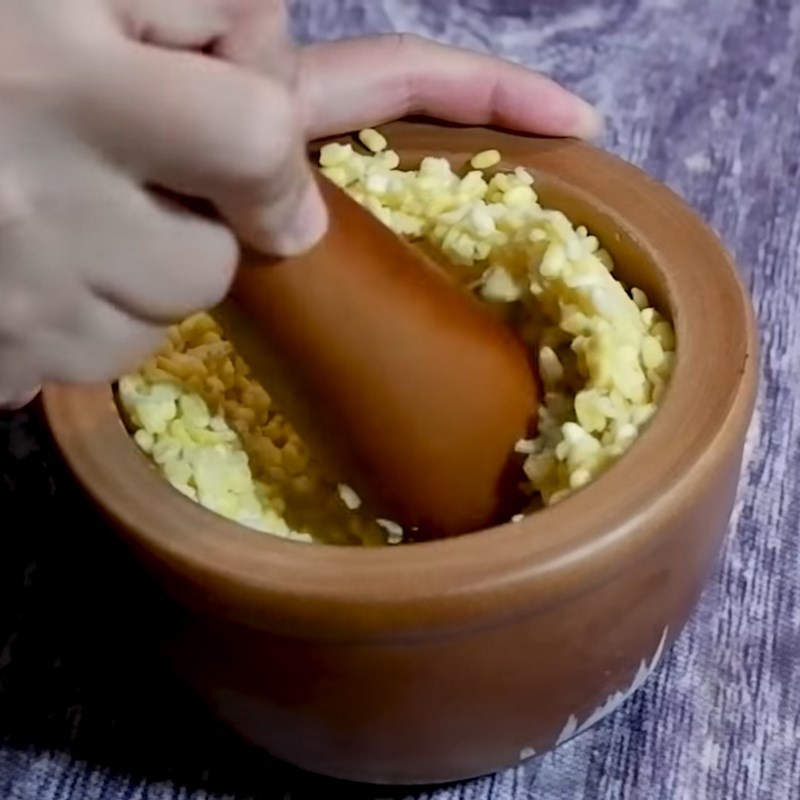
3. Mix and Steam the Sticky Rice
- Drain the soaked rice thoroughly. Mix in half of the mashed mung beans and combine by hand. Add 2 tablespoons of cooking oil and mix well.
- Place the mixture into a steamer tray and steam over medium heat for about 40 minutes.
- Once the sticky rice is fully cooked, transfer it to a large plate to cool slightly. When it’s warm, gently mix in the remaining half of the mashed mung beans, making sure the beans coat the rice grains evenly.
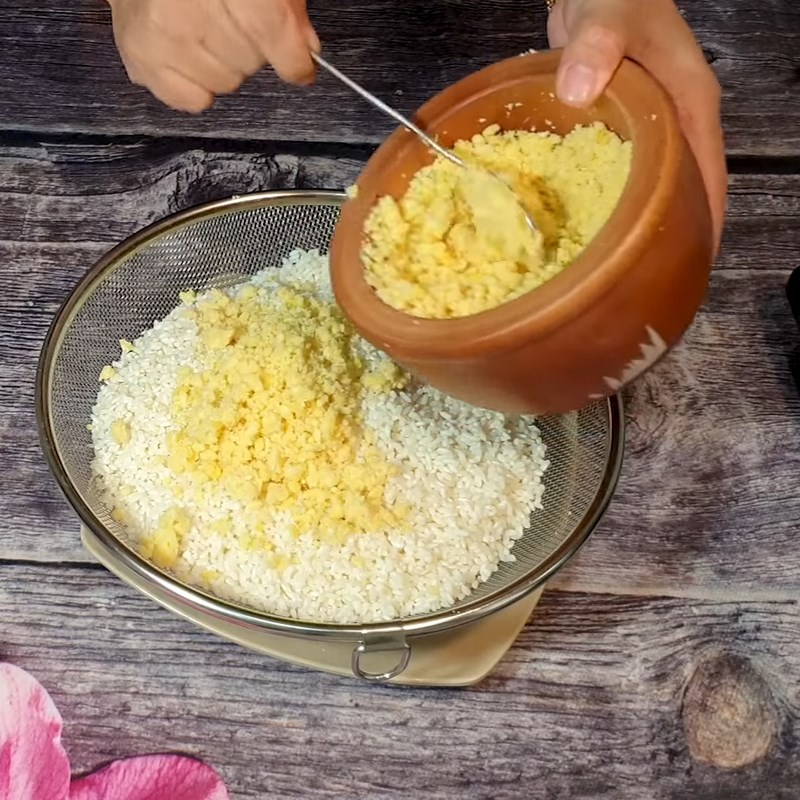
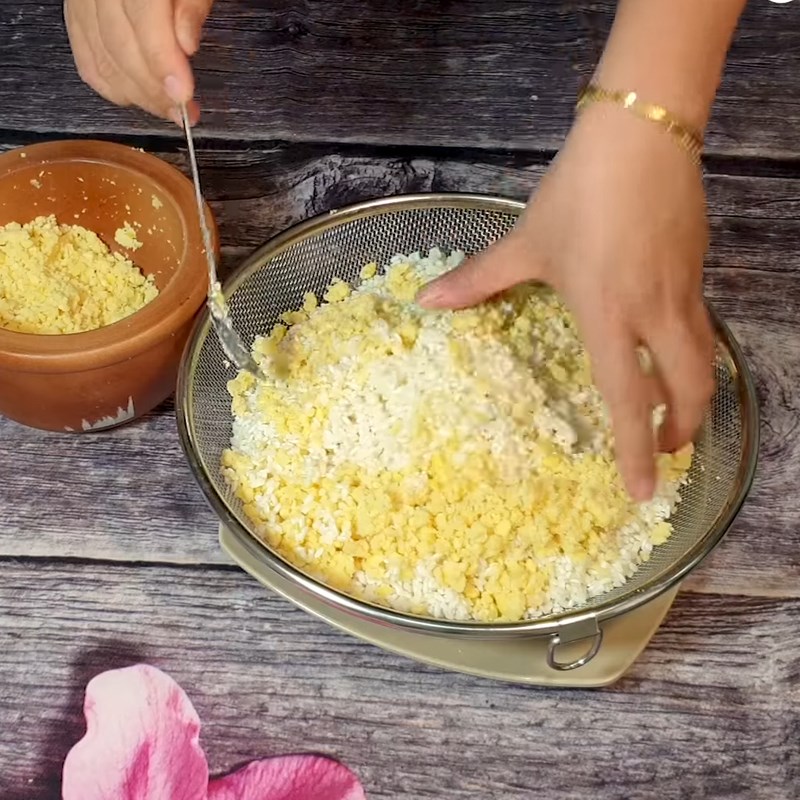
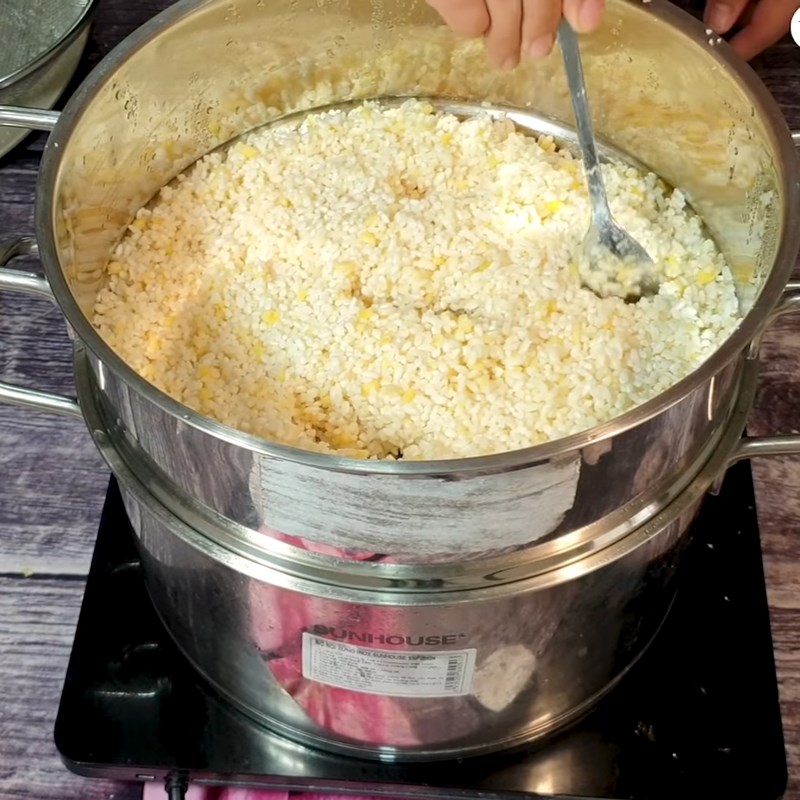
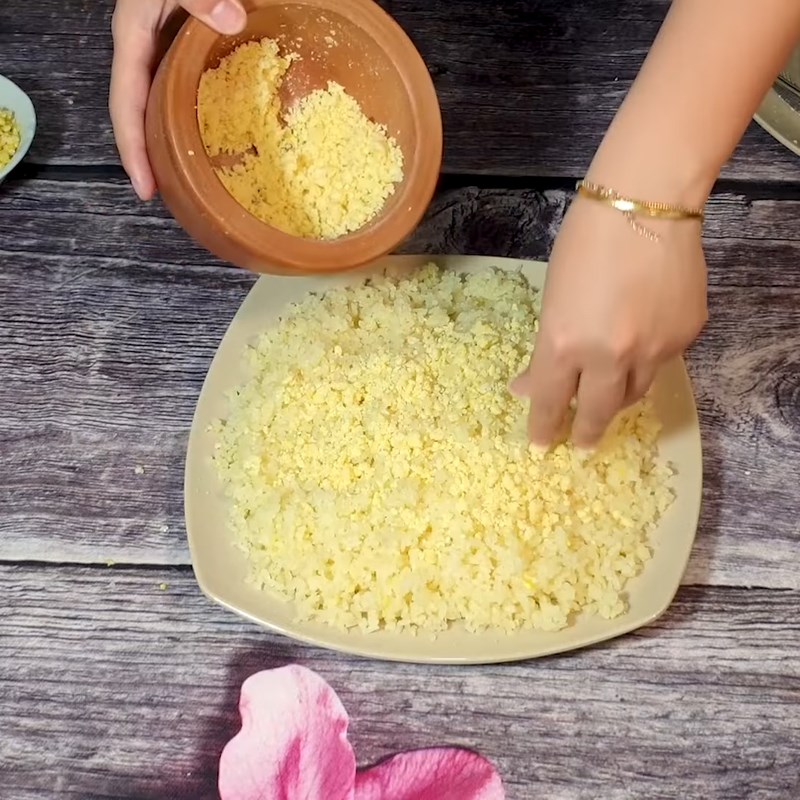
4. Cook the Sweet Mung Bean Soup
- In a pot, add 600ml of water and 3 tablespoons of sugar (adjust to taste depending on how sweet you prefer the dish).
- Dissolve 200g of tapioca starch in cooled boiled water. Slowly pour the starch mixture into the sugar water while stirring to avoid lumps.
- Once the mixture begins to simmer, add the reserved whole mung beans (from Step 2) and stir gently until the mixture thickens slightly. That’s your sweet mung bean soup done!
- To serve, ladle the sweet soup into a bowl and top it with a scoop of the sticky mung bean rice.
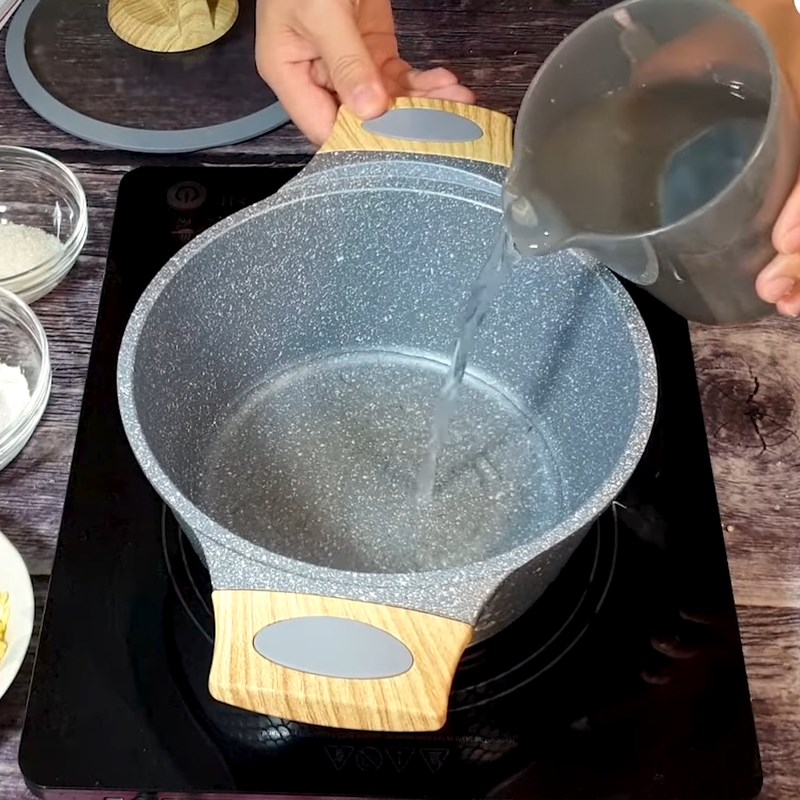
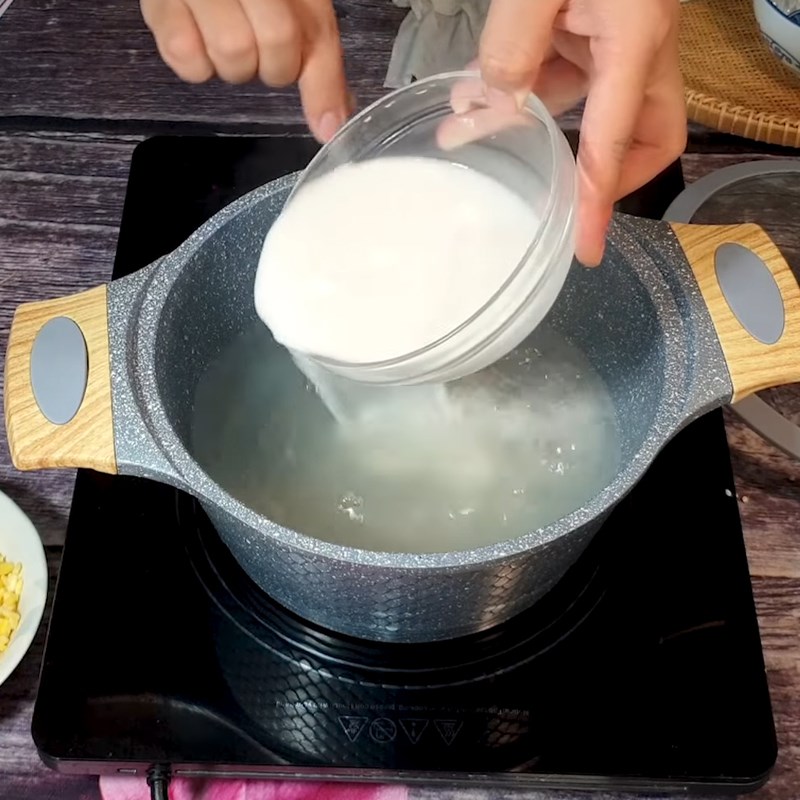
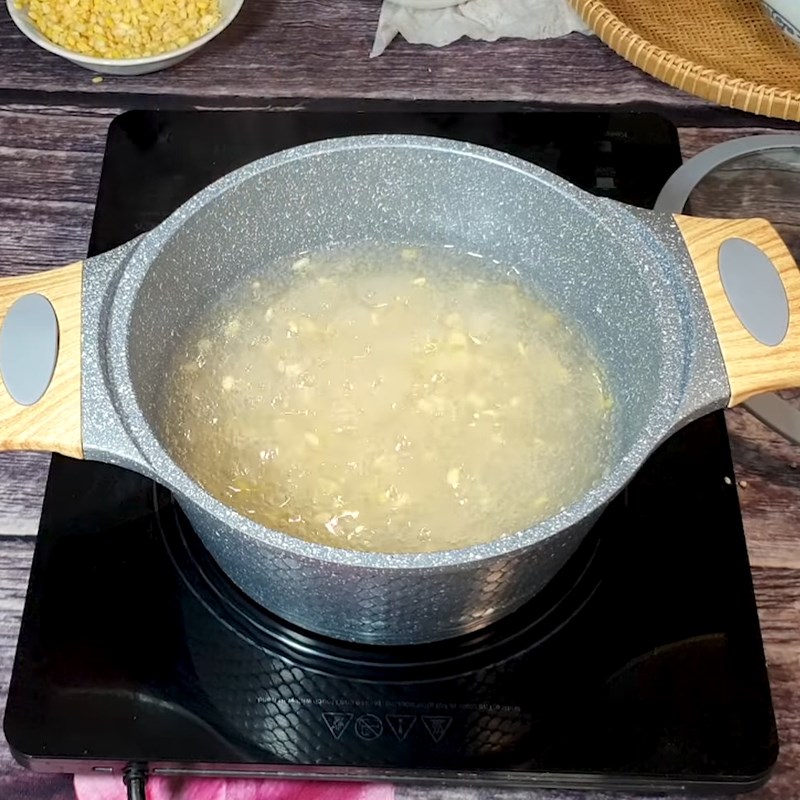
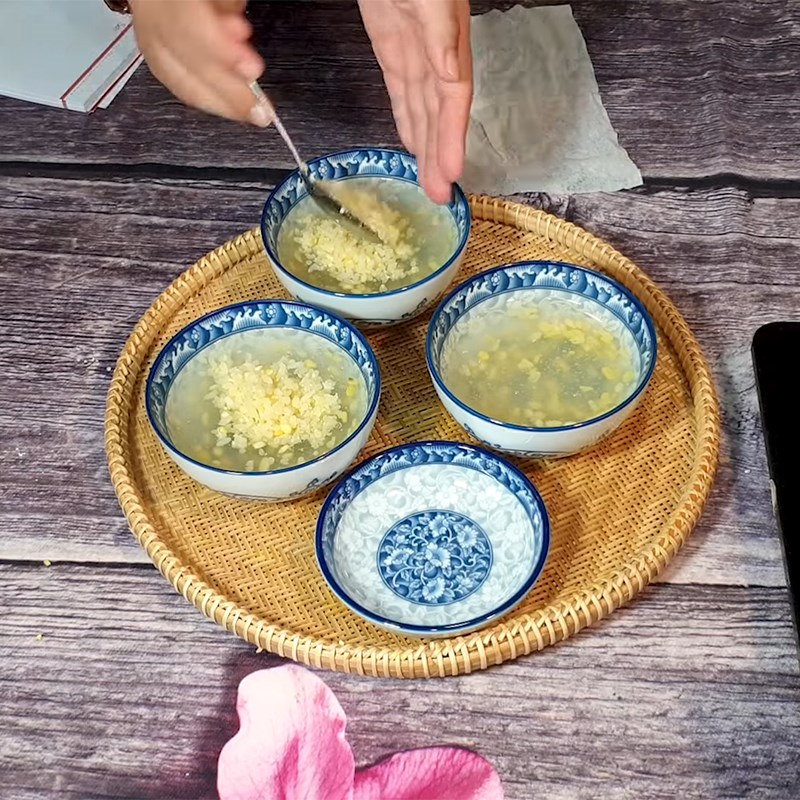
5. Final Dish
The finished xôi chè offers a delicate sweetness and a soothing, smooth texture. The chewy glutinous rice blends beautifully with the rich, nutty flavor of mung beans and the silkiness of the sweet soup.
💡 Pro tip: Keep the sticky rice and the sweet soup separate until serving. Add the rice to the bowl just before eating to prevent it from getting mushy.
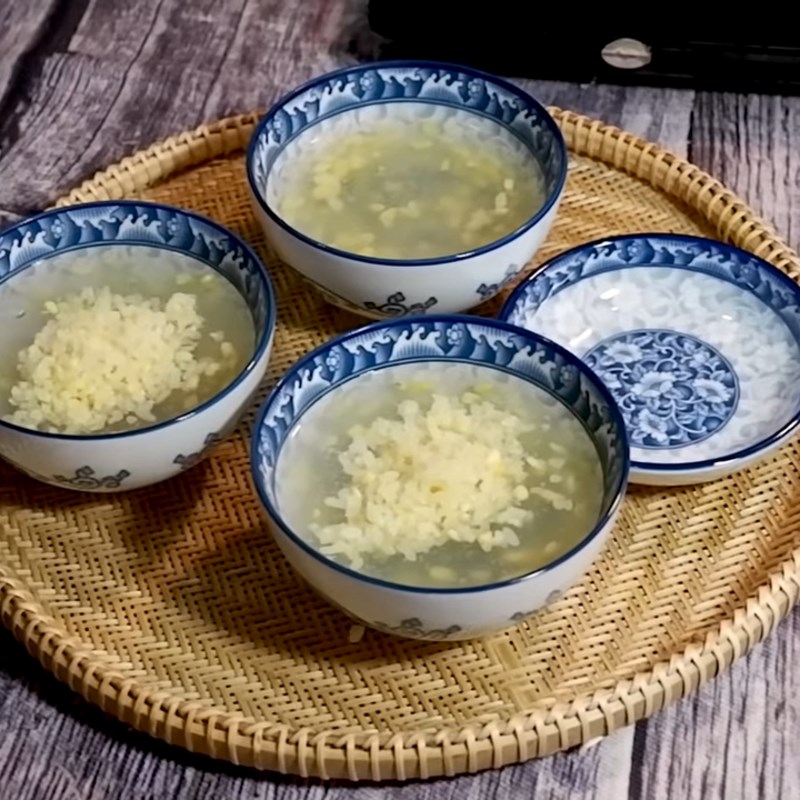
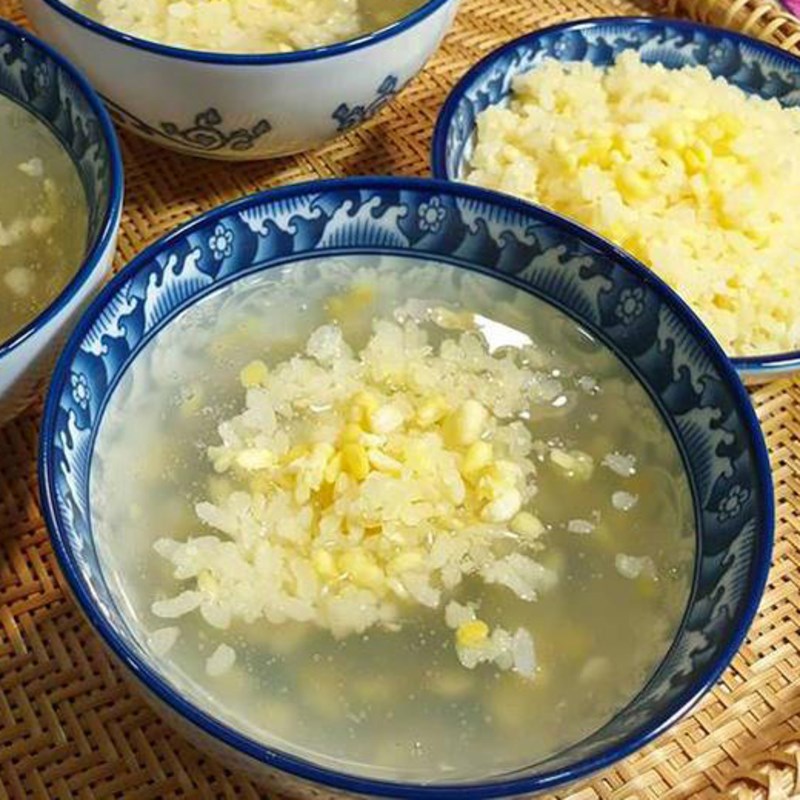
Backstory – Xôi Chè: A Gentle Taste of Tradition and Togetherness
In Vietnamese culture, xôi chè is more than just a dessert—it’s a dish that carries the warmth of family, the calm of spiritual offerings, and the joy of simple celebrations. Whether served at weddings, full-moon festivals, or placed on ancestral altars during Tết and Vu Lan, this humble combination of sticky rice and sweet mung bean soup speaks of sincerity, gratitude, and care.
The golden sticky rice, infused with mashed mung beans, is tender and lightly sweet, while the shimmering soup made with whole mung beans and tapioca starch adds a soothing, silky contrast. Together, they create a dish that’s both comforting and symbolic—a blend of texture and taste that reflects the balance of yin and yang in Vietnamese culinary tradition.
For many, xôi chè is tied to childhood memories—of watching a grandmother patiently steam rice over a wood stove, of morning markets where this treat is wrapped in banana leaves and handed out with a smile, of the quiet reverence of offering bowls of chè at a family altar.
Today, even in modern kitchens, xôi chè remains a cherished dish—a beautiful reminder that sweetness doesn’t always come from sugar alone, but from the stories, love, and traditions passed down with each bite.
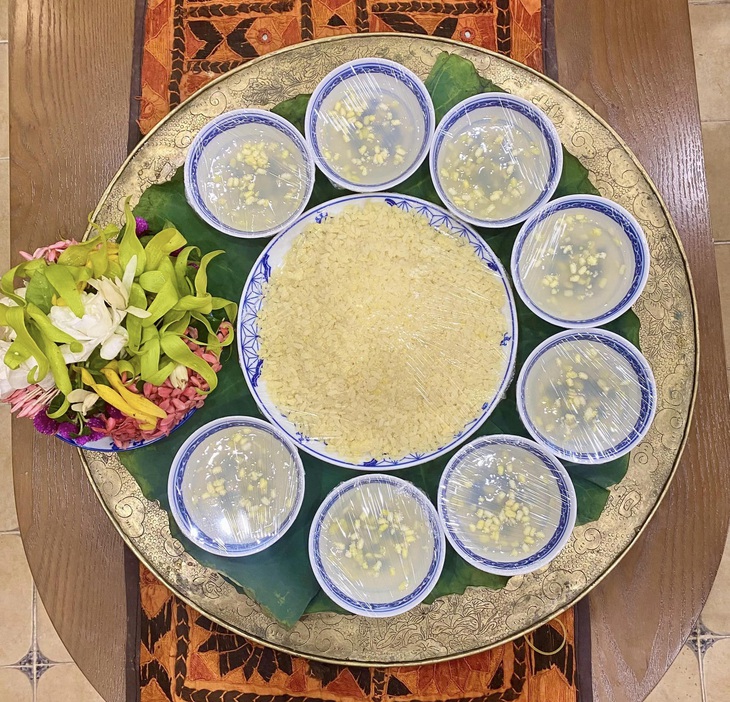
(“Xoi che” Hanoi style)